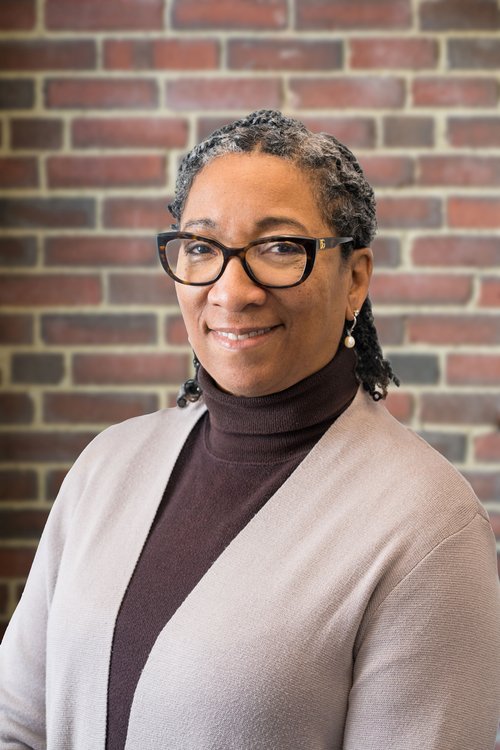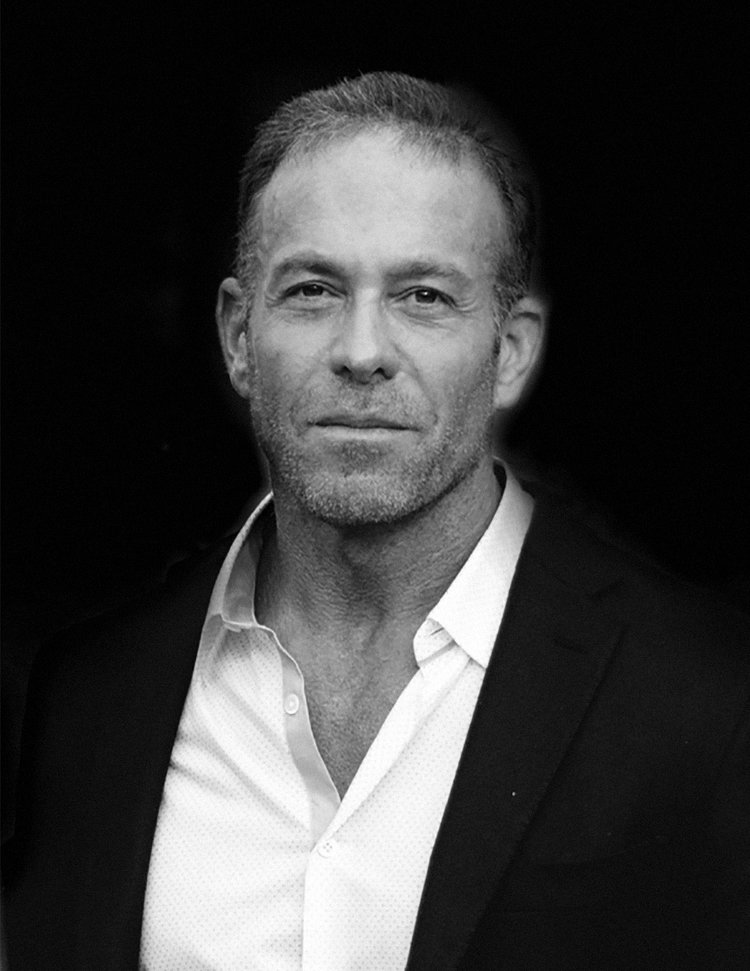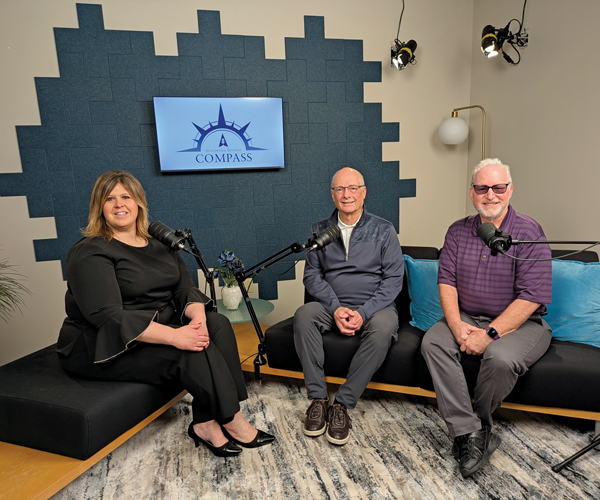The Changing Course of Postsecondary Education
Higher education leaders weigh in on the how they're navigating the new realities of postsecondary education.
by Terry Troy | Feb. 1, 2025 | 5:00 AM

Courtesy Individual Schools
With crisis comes change; with change comes opportunity. But leave your cockeyed optimism at the door.
It’s certainly no secret that postsecondary educational institutions are facing headwinds that make a Lake Erie November gale look like a gentle evening breeze.
A new Ohio Auditor of State report indicated that Lakeland Community College is close to being in a state of financial crisis. Earlier this year, Cleveland State announced staff buyouts to deal with a growing operational deficit. Baldwin Wallace carved $17 million from its programs, extended a faculty hiring freeze and is now in the middle of an executive search for a new president. And most tragically, Notre Dame College in South Euclid was forced to close its doors in May 2024 after a 102-year run.
But these institutions are far from alone. According to the Ohio Department of Higher Education, statewide, public higher education enrollment fell by more than 60,000 students between fall 2019 and fall 2023. But there is a glimmer of demographic hope. The student population rose from 429,310 students in 2023 to 444,014 students in 2024.
Regionally, the long-term news is no better: Cleveland State University, Lakeland Community College, Ursuline College, the University of Akron, Hiram College, Lorain County Community College, John Carroll University and Tri-C have all experienced double-digit declines in enrollment over the last 12 years. Although some, including CSU and Hiram, experienced minimal increases this year.
Attendance at Ohio’s universities and community colleges dropped more than 11% during that 12-year period. Lower birth rates have led to bloated college operations and programs as well as an over-staffed faculty which, in turn, has caused tuition costs to rise above and beyond the rate of inflation.
This has led to doubts about the value of a college degree among parents and potential students, with fewer young people choosing to go to college.
Naturally, academia has been quick to respond: cutting budgets, closing institutions, offering online degrees and changing programs to better align with workforce needs to address the changed student school of thought of: “What’s in it for me?”
These headwinds have forced many of our postsecondary institutions to find a new skipper and change course. Many of them have taken the helm in just the past four years, with some taking the wheel as early as this past year.
We asked these new captains of academia about how they will navigate the new realities of the postsecondary sea. As you might expect, many are pushing the limits of their abilities and imaginations to keep Northeast Ohio and Greater Cleveland on course.
A New, Integrated Initiative: Cleveland State University
With an enrollment of more than 14,200 students in 2024, Cleveland State University (CSU) is the largest university in the Greater Cleveland area and is second only to the University of Akron in Northeast Ohio in terms of its size. As such, it represents an important piece of the economic puzzle in our area in terms of workforce development as well as feeding our corporations with skilled and qualified graduates.
“With 80% of our graduates remaining in our area up to 10 years after graduation, it’s pretty clear that we are a Cleveland university,” says Laura Bloomberg, Ph.D., the eighth president of CSU, who was named to the position in spring 2022. “We know our purpose. We teach. We do research. We do outreach and engagement. We can provide almost limitless opportunities. But we also need to service our entire region.
“We want to blend excellent access with excellence in academics. We need to be academic innovators and leaders in a way that enables access for anyone who wants to be here.”
It might sound a little like “Postsecondary Education 101,” but focusing on well-defined basics could be a prescription for success, and just what the doctor ordered for CSU.
The corner may have already been turned. Enrollment rates increased very minimally from 2023 to 2024, but the specter of challenging demographics is far from gone.
“We have to be crystal clear on communicating our value proposition, not only to our prospective students, but the community in general,” says Bloomberg. “It’s true there has been a reduction in the percentage of our population seeking a college degree and that has compounded our headwinds. So, we have reimagined our core curriculum, reflecting the changing needs of not only our workforce, but society in general.”
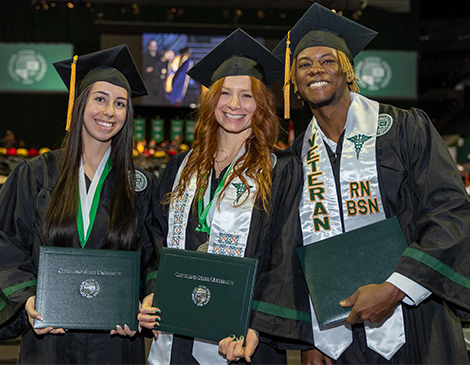
In CSU’s case, it’s something called Cleveland State United, a new strategic initiative approved by the school’s Board of Trustees in fall 2024. Guiding the university’s efforts from 2025 until 2030, the school’s leadership spent more than six months working closely with students, faculty, staff, alumni and community partners to refine the priorities that will shape CSU’s future, as well as the economic future of Northeast Ohio. It includes a launch of 11 new integrated degree programs.
“An integrated degree pulls together two different disciplines that have impact and value to each other into one degree,” Bloomberg explains, positing an example. “Take music and computer science. The integration of those two has value in the marketplace, especially when you think about gaming and entertainment.”
In addition to integrated degrees, the university is introducing a Inquiry Core Curriculum so that students entering CSU will learn how to explore probing questions, examine their own big ideas and dig into specific interests from day one of their college career. CSU also will track the progress of the United program using Key Performance Indicators.
“There are still many opportunities for nimble educational institutions to serve our region,” says Bloomberg.
Battling Rising Costs: Lakeland Community College
Like most of our cover story college presidents, Dr. Sunil Ahuja has been at the helm of Lakeland Community College for a relatively short time. He assumed the position in April of last year. He also is quick to address the reason for the great period of transition in postsecondary leadership we are experiencing in Northeast Ohio.
“It’s true that a lot of us are new to our positions,” says Ahuja, “but it’s not just due to the increasing challenges related to enrollment, finance and demographic shifts — especially in this part of the country. Some of it also involves the age of previous presidents, their tenure of leadership and a natural part of transition. College presidents don’t serve 15, 20 or 25 years like they used to, so there are a lot of factors that are going into this transition right now.”
A shorter presidential term makes sense as today’s postsecondary leaders need to adapt to changes that come at lightning speed.
“One of the biggest challenges we face is the perception that a college education is no longer worth the money, which is not based in fact at all,” says Ahuja. “There is plenty of hard data that shows that people with advanced degrees make more money than people with bachelor’s degrees and people with bachelor’s degrees make more money than people with associate’s degrees over the course of a lifetime.”
But there is a greater shift, a focus of attention, on college costs as more students or their parents begin to take on the burden of tuition, Ahuja concedes.
“Public funding is not what it used to be, so people are paying out of pocket more,” says Ahuja. “That contributes to the question of, ‘Is it really worth spending that much money toward a two- or four-year degree?”
The average debt of a student graduating with a bachelor’s degree is close to $38,000, notes Ahuja.
“But remember, you are making an investment for a lifetime,” he adds. “Many people buy cars today that cost much more than $38,000.”
Still, it’s easy to balk at such amounts, especially if funds are tight or life circumstances are such that a potential student has to begin gainful employment earlier.
“And, because many people are paying out of pocket, they realize that the cost of education is rising faster than the rate of inflation,” says Ahuja.
Still, many of today’s higher-paying jobs are very technically oriented, often requiring some sort of credential just to get through the door of an employment office.
“That is where a community college like Lakeland comes in,” says Ahuja. “We provide a sweet spot. You can do your first two years here on your way to a four-year degree that ultimately costs you less than going to a straight four-year college. After your first two years and an associate’s degree, you can stop, move into a job and then continue on with your education later after you have established a career.”
Or you can go the workforce development route, where you get a credential after a six-month program, which leads to profitable employment, notes Ahuja. You can even continue your education going that route while working, which leads to career advancement.

“It’s something called stackable credentials, which has been available for some time,” adds Ahuja. “You can stack one credential on top of another, and then keep pushing those credentials toward an associate’s degree, or maybe even something more advanced.”
Steeped in Tradition: Ursuline College
For David King, EdD, the 18th president of Ursuline College, a college education should still be transformational as opposed to transactional. While named Ursuline’s president earlier in June 2024, King received the presidential medallion and the actual Charter of Ursuline College at a Blessing Ceremony on Nov. 17.
That scenario offers clear insight into the respect for tradition this august institution places on postsecondary education. But even for an institution steeped in tradition, there are realities and future challenges that must be faced.
“Stepping into this position started with a casual conversation, but warmed very rapidly,” says King. “I knew about Ursuline from my decade-plus experience at Malone University. I also knew two predecessors, Sister Diana Stano and Sister Anne Marie Diederich, so I had a good sense of Ursuline’s mission and core values.
“I have spent most of my career in independent, faith-based education. I also knew what Ursuline’s board was determined to do. This was a place I could raise quickly as both a believer in their mission and a believer in the pathway the board has proposed for the future.”
Ursuline, like any small, independent college in the Midwest, has a challenged business model.
“Given our headwinds, I think we are challenged,” says King. “At the risk of sounding pollyannish, the biggest challenges often lead to exceptional opportunities, if we are willing to see them.”
But only if you have the vision.
In the case of Ursuline College’s Board of Trustees, that vision went up I-90. In September 2024, the board approved a letter of intent (LOI) to pursue a strategic partnership with Gannon University, a vibrant Catholic university in Erie, Pennsylvania. It begins a process to create a premier Catholic institution on Lake Erie and in Pepper Pike.
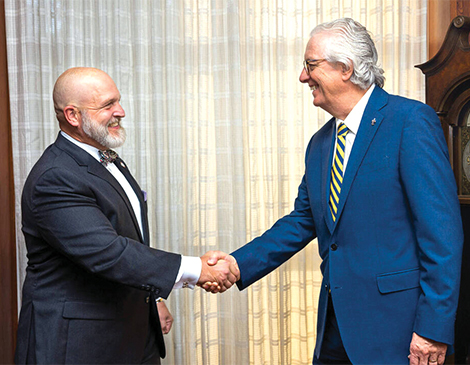
The foundation for this strategic partnership is built on mutual respect, complementary missions and values and a shared commitment to grow each other’s institutional strengths, while preserving individual stories and traditions. The partnership will provide Ursuline students with expanded opportunities, increased program offerings and enhanced learning experiences while growing the College’s future.
While the strategic partnership offers a lot of advantages for both schools in terms of maintaining tradition, King admits that Ursuline must redefine its definition of a “traditional” college student.
“Our business model starts with a view of the ‘traditional’ college student being someone who is 18 years old, right out of high school, who wants to be a full-time student for the next four or five years and graduate with a bachelor’s degree,” says King. “Yet many of our students today don’t fit that profile.”
That includes students who might be under-resourced, first generation or nontraditional students and giving them the educational opportunities and programs they need to succeed.
“Secondly, our entire education model is structured to change and adapt over time, and not to change and adapt rapidly,” he adds.
Those are challenges that King will address moving forward.
Pulled in Opposite Directions: University of Akron
As the 19th president of the University of Akron, Robert J. (R.J.) Nemer sees growth and enrollment as the biggest challenges facing the University of Akron (UA). Its enrollment is currently 14,813, which includes CCP/ECHS (dual enrollment for high school students), undergraduates, graduate students as well as the law school.
“While simultaneously fulfilling our commitment to deliver a top-notch educational experience for our students and to grow the numbers in our classrooms, we will need to navigate numerous challenges of shifting student demands, a shrinking and finite pool of prospective students and maintaining affordability to maximize access for a number of different demographics,” says Nemer. “While it is important to continue to compete for regional students, we are also exploring ways to increase graduate and international applications.”
UA’s predicament is hardly uncommon. As a nation, postsecondary education is looking at declining enrollments and increased costs to deliver an education.
“It’s a tough place to be,” Nemer says. “As institutions of higher learning, we all, of course, should have a student-centered approach and a high-quality educational product as our core mission. When all institutions are competing for the same finite pool of applicants, growth becomes more difficult. When growth doesn’t occur to the level that an institution needs it to occur, then the increased costs of delivering the high-quality product are felt even more.”
But there is an upside, Nemer notes. The value of a postsecondary education is still very high. The challenge is to find ways of marketing that value to the current generation of prospective students.
“As our student population changes and they develop their own set of values, goals and priorities, postsecondary education must find relevant ways to connect with students and remain part of the ‘future plans’ conversation,” says Nemer. “We are trying to take a systematic approach to cutting costs in some areas while increasing investment to grow programs in others.
“We are also taking a hard look at our processes to ensure that once a student chooses UA, they want to remain here to finish their degree and enter the workforce,” he adds. “We have instituted new software to keep students on track and improved our advising to ensure students are engaged and on course.
“Investing in student success obviously helps to solidify student retention, but it also creates a sense of belongingness and a perception of a high-quality education and experience. The success stories of our current students and of our alumni are the best advertisements we have as we talk to prospective students.”
There is a general and growing perception across the country that a postsecondary education is not worth the investment — that graduating with burdensome debt is detrimental to building a career pathway, at least in the short term.
“We believe that the value of a higher education has not wavered, and we continue to communicate the value of it in all of our recruitment efforts,” says Nemer. “In our conversations, we often include the fact that UA graduates earn more than [graduates of] any other institution in Northeast Ohio.
“We have also been working, as part of a state higher education consortium called the Inter-University Council of Ohio, to develop an awareness campaign about the value of higher education that will be launched statewide in 2025. On the national front, we are participating in pilot programs and college accelerators.
Facing a Demographic “Cliff:” Hiram College
Smaller private, liberal arts colleges face numerous challenges today. In our area, there is a declining population of traditional liberal arts college students, something Dr. Robert Bohrer, Ph.D. and president of Hiram College in Portage County, describes as a “demographic cliff.” In addition, the cost of postsecondary education is rising.
Combine that with shrinking and strained financial resources for students and it’s easy to see how there is now a misconceived notion that a traditional liberal arts college education is no longer worth it.
But this is one smaller liberal arts college fighting against those perceptions.
“We recognize the concerns many students and families have about whether postsecondary education is worth the investment,” says Bohrer. “These are important conversations, and we are committed to addressing them head-on with honesty, transparency and personalized support.
“Our approach begins with ensuring that every visit with prospective students is personal and focused on their individual goals and aspirations. During admission events, we host alumni panels where graduates share how their Hiram education prepared them not only for their first job but for a lifetime of career success. Additionally, we thoughtfully tell their stories through our admission materials, website and other communications, showcasing the long-term value of a Hiram education. Alumni emphasize the adaptability, critical thinking and leadership skills they gained, which have helped them navigate career changes and challenges over the years in an ever-evolving job market.”
The strategy is working. Hiram exceeded its enrollment goal for the 2024–2025 academic year, with 274 incoming undergraduate students. This is a 7.5% increase from the previous year, and the second year in a row that the college has surpassed its enrollment target.
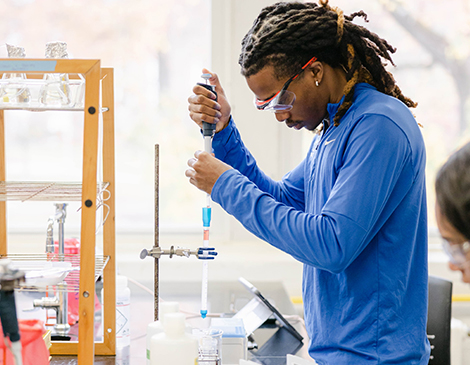
“Affordability and accessibility are central to our mission,” explains Bohrer. “We understand that financial concerns are a significant factor in today’s conversations about the investment in higher education. That’s why we are transparent with families from the start, engaging in meaningful discussions about costs and the return on investment. Our goal is to find an approach that works for every student, aligning their educational experience with their personal and professional goals to ensure their investment in college is truly worth it.”
These connections and conversations don’t stop after students enroll. The college continues to create opportunities for current students to engage with alumni through mentorship programs, networking events and class visits. This ongoing dialogue allows students to see firsthand how a Hiram education is not just about earning a degree but about building a foundation for lifelong learning, adaptability and success.
But those marketing strategies only go so far.
“We are focused on recruiting in areas where the student population is growing, connecting prospective students with our excellent programs,” says Bohrer. “For example, our Nursing program has achieved a 100% NCLEX (National Council Licensure Examination) passage rate for the past two years, making us one of only four schools in Ohio to reach this milestone. We also offer direct admission into nursing, providing students with a clear path to success.”
Prosperity Through Partnering: Lorain County Community College
It’s certainly no secret that the landscape of higher education has transformed significantly over the last 10 years. But Lorain County Community College (LCCC) is well positioned to meet new and future challenges.
“Today’s students are more focused than ever on outcomes — they want assurance that their education will lead to meaningful career opportunities,” says LCCC President Marcia Ballinger. “This shift has prompted us to deepen our connections with industry partners to provide hands-on, real-world learning experiences that directly prepare students for the workforce.”

One standout example is LCCC’s Microelectronic Manufacturing Program.
“From the first year, students balance classroom learning with practical, on-the-job experience, working three days a week with local employers and attending class two days a week,” says Ballinger. “This intentional program design has been remarkably successful, with 100% of graduates securing jobs in the field by the time they complete the program.”
For adult learners looking to transition into new careers or upskill for advancement, the time required to complete training is often a critical factor — especially when employers urgently need talent, Ballinger notes.
“That’s why we developed our Fast Track programs, which offer short-term credentials in high-demand fields like advanced manufacturing, business services, health care and IT,” says Ballinger. “These programs can be completed in 16 weeks or less, allowing participants to quickly reenter or advance in the workforce.”
One of the greatest challenges facing community colleges is meeting the rapidly evolving talent demands of emerging industries like smart manufacturing, advanced energy, aerospace and health care innovations.
“Northeast Ohio is uniquely positioned for growth, with assets that make it an attractive location for both expanding companies and new investments,” says Ballinger.
According to a recent Site Selector survey, talent remains the top consideration, she says. This underscores the urgency of building a robust pipeline of skilled workers to support business success in our region.
“To achieve this, we must not only bridge existing skills gaps but also innovate at the speed of industry,” adds Ballinger. “As a community college, our mission is to provide education that directly leads to good jobs while strengthening our regional economy. With 90% of LCCC graduates staying in the region to live and work, we are a key driver of our community’s economy.”
Programs like College Credit Plus are key to this effort, allowing high school students to get a head start by earning college credit and exploring career pathways in these cutting-edge fields.
“I’m particularly proud of our collaboration with K-12 partners, which enabled nearly half of Lorain County’s high school graduating class of 2024 to earn college credit from LCCC. This achievement helps students save both time and money while positioning them for success in high-demand careers.
Playing to Core Strengths: John Carroll University
When Alan R. Miciak assumed the helm as the 26th president of John Carroll University in University Heights in 2021, he was already very familiar with the school and its Jesuit roots.
“I had been at John Carroll since 2015, and this isn’t a huge institution, so I knew our community very well,” says Miciak. “We’re facing the same challenges as other postsecondary schools, including a declining demographic, increasing costs and delivering value, but we always try to be special. We want to be the best at what we do and to be different in the way we deliver our education.”
As a Catholic, Jesuit university, John Carroll adheres to some important traditions. The school was founded in 1886 by the Society of Jesus under the title of St. Ignatius College, after Ignatius of Loyola.
But the Jesuit commitment to education goes back much farther than that.
“The order has a commitment to quality education that goes back almost 500 years,” says Miciak. “The order was founded [in 1540] and later expanded on the basis of providing education worldwide. We believe that all learning should be taken out into the world and that a life is made to be lived in the service of others.
“We look toward our students, people of character who value what we provide. We can’t be everything to everybody, so we focus on our strengths.”
Fortunately, employers also seek those personal strengths, giving John Carroll a successful niche. But Miciak concedes that the school needs to address the ability of graduates to find a job or launch a career — even if it means moving on for more advanced degrees.
“In the current economic environment that we are in, where the price of education is high, the notion of getting a good job after graduation is very important,” he says. “What sets us apart is that we work very hard to blend professional preparation with personal transformation.”
The university has expanded its business and health care offerings recently in response to the more transactional mindset of today’s prospective college students.
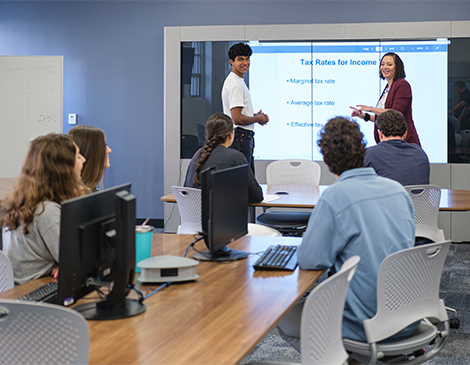
Take JCU’s Boler College of Business as an example.
“Potential employers seek out our graduates for the preparation in a business career that they receive here,” says Miciak. “But they also realize that our graduates have solid values they can bring to a decision-making process in business.
“The same is true in health care. We have many graduates that started with degrees in traditional subjects like biology and chemistry but went on to receive advanced degrees to become doctors or dentists.”
Today, JCU also offers a four-year Bachelor of Science in Nursing, with state-of-the-art clinical training across health care systems in Cleveland.
Naturally, JCU believes in its mission and traditions, but it’s not just lip service. It puts its money where its mouth is.
At the end of last year, the university was nearing the completion of an ambitious $100 million investment to enhance its academic portfolio, elevate the student experience and transform campus facilities and operations.
Building a Foundation: Cuyahoga Community College
When many people think about the foundation of education, they think of the three Rs. But when it comes to postsecondary education, Michael A. Baston, JD, EdD, fifth president of Cuyahoga Community College (Tri-C), prefers to think of it as five Rs: Respect, Recognition, Responsiveness, Resources and Relationships.
“Those are the five keys that we use at our educational institution to help us advance our students,” says Baston. “All of my staff understands these five things as an important part of our culture. It is what sets us apart and it will continue to propel us forward.”
First and foremost, students want “Respect.”
“They want an educational institution that respects their time and money,” says Baston. “They don’t want to overpay, and they don’t want to stay here forever.”
Students at Tri-C enjoy the lowest tuition in the state. But they also want programs that respect their time and their window for learning. It’s one of the reasons the college offers so much flexibility in its courses and programs.
“It’s why I always say that we are the most selective higher educational institution in Northeast Ohio,” says Baston. “We’re more selective than all those other institutions because our students select us, while most other institutions select their students. We are blessed because we get to meet our students where they are. We don’t pick winners and losers. We think everyone is a winner, and we help them design the educational experience that works for them.”
In addition to the traditional 16-week semester, students can choose to attend two 8-week semesters. Or they can do a 12-week semester, a 14-week semester or a shorter credentialed course that leads directly to employment.
“They can attend online, or through a hybrid of online and in-person attendance,” adds Baston. “They can do stackable credentials, so they can earn along the way while they pursue their education and career.”
It’s a business model that is working.
“We are in our fifth semester of enrollment growth, and we are up almost 12% in the shorter credentialed courses that lead to work opportunities,” says Baston.
This leads to the “Recognition” that students want — to have their education their own way, he notes.
Students today also want “Responsiveness,” to their needs, one of the reasons for the high degree of flexibility in Tri-C’s curriculum.
“In addition, many students today may not want to be a worker for someone — they may want to own or start their own business,” says Baston. “Many colleges have classes and programs that prepare people to be workers without recognizing that students today are much more entrepreneurial.”
It’s one of the reasons Tri-C built its Center for Entrepreneurs at Corporate College. It provides the tools and services students need to begin and follow on their entrepreneurial journey. The Entrepreneur Center is just one example of how Tri-C provide its students with “Resources.”
“Students also need resources to navigate on their educational journey,” says Baston. “Many educational institutions have embedded roadblocks in a bureaucracy. We help them navigate through a bureaucracy not only here, but also external bureaucracy.”
Lastly, Tri-C students want “Relationships.”
“They want to feel like they are a part of something bigger than themselves,” says Baston. “Many higher educational institutions don’t recognize that today’s students are much more technologically savvy. They know how to navigate an online environment.”
Looking for a Leader: Baldwin Wallace University
With the headwinds facing postsecondary education stronger than ever, the position of leadership is in much greater flux. Due to the rapid changes happening in higher education, today’s college presidents often have very short-lived term of three-, five or even seven-years, as opposed to the 15- or 20-year terms in years past.

Technology and market changes have sped up the transition, compelling college boards to work harder on executive and leadership searches.
Baldwin Wallace University (BW), a private institution in Berea, is in the middle of a presidential search. It could be completed later this year. Paul Clark, who serves on the Board of Trustees for the University, leads the search committee to find BW’s tenth president.
The incoming president will lead the management of the University, overseeing its cabinet, which is responsible for all school functions, including: academics, finance, operations, philanthropy, alumni engagement, student affairs, enrollment management, diversity and inclusion, corporate and organizational engagement and human resources.
Sounds like a pretty full plate, which is nothing new to the 12-person presidential search committee.
“Finding a good college president today is a little like finding a unicorn,” says Clark, who previously served as regional president of PNC Bank in Cleveland and has ample experience as a business leader as well as an illustrious career of community service that includes more than 24 nonprofit organizations. “I like to begin by breaking down the search into two categories of traits, The first traits are tangible and non-negotiable. The second are non-tangible traits. They are equally important, but are often more challenging to identify.”
The first tangible trait is being a strategic thinker, says Clark.
“You need a leader who can build upon the strengths of your university, but who also has a commitment to student growth and affordability,” says Clark. “We have to graduate students without crushing debt that limits their career choices.”
The second trait is the talent of fundraising, “for scholarships and also endowed professorships,” says Clark. “The third trait is someone who understands and can lead within an operative budget. They understand what key elements of an operating budget look like; how they are generating cash and how they are deploying cash.”
The fourth trait, which Clarks describes as being obvious, “is the ability to build teams and develop people.”
Presidents need to manage difficult budgets, smooth restructuring of an organization and handle the forces of consolidation — and do so with an optimistic smile.
“Which is the first of the intangible traits, which is realistic optimism,” says Clark. “The second intangible is that character counts.”
The third intangible trait also sounds like common sense.
“You need a leader who actively seeks feedback, not just once in a while or as a part of an annual survey — but every day,” says Clark “You need a leader who is constantly asking for feedback, so they have disciplined reflection on what they are doing and why they are doing it. You need a leader with great curiosity and even greater listening skills. They need to know the vibe of what is happening on campus.”
If that seems like a lot to ask for, it is. Surprisingly, BW has had a large pool of highly qualified candidates.
“And those candidates come from a lot of different backgrounds,” says Clark, who acknowledges the executive search firm of Russell Reynolds Associates for its help and guidance. “Some candidates have progressed through academics as past presidents, some come from academic financial leadership as institutional leaders, chief operating officers or enrollment leaders. But we have also had a large number of cross-over candidates, executives with non-academic backgrounds from a variety of business roles and that has been a pleasant surprise—and a real treat.”
The presidential search committee is well into the search, says Clark and could name a new president early in the next academic year.
Trending
-
1
-
2
-
3
-
4
-
5


